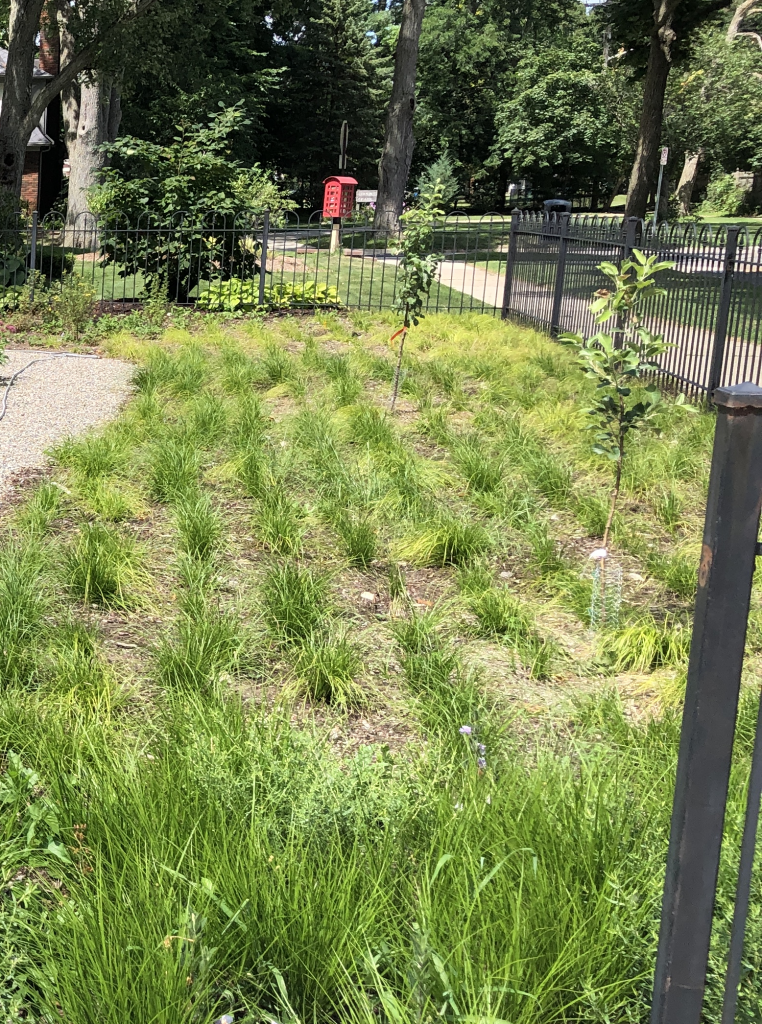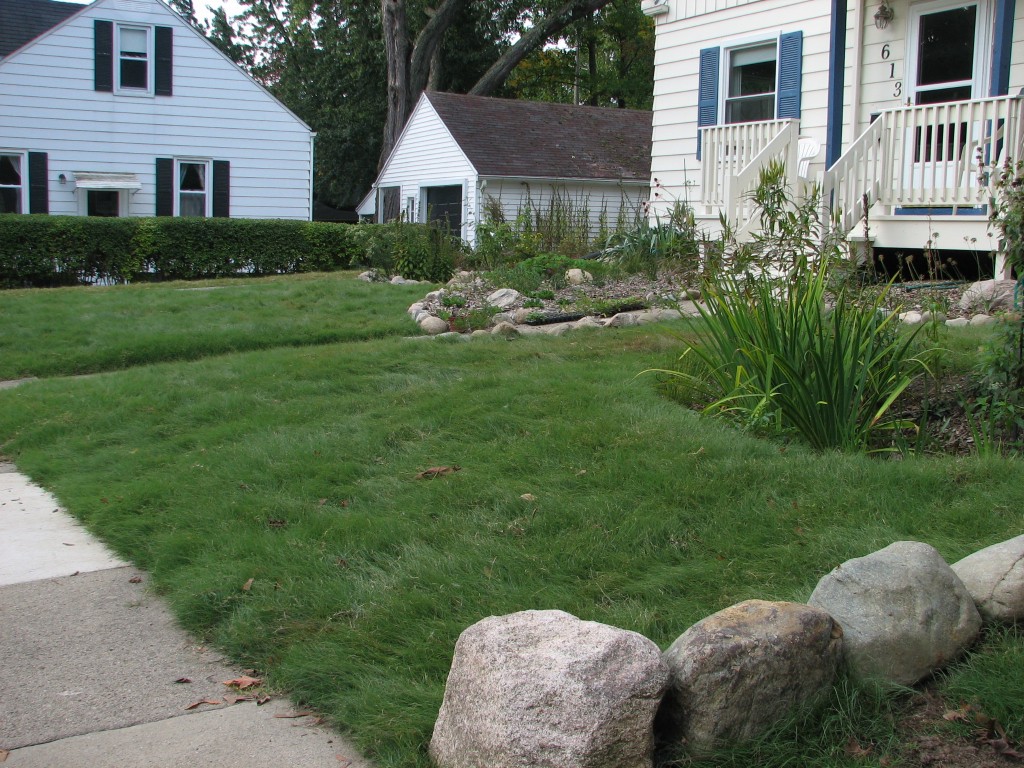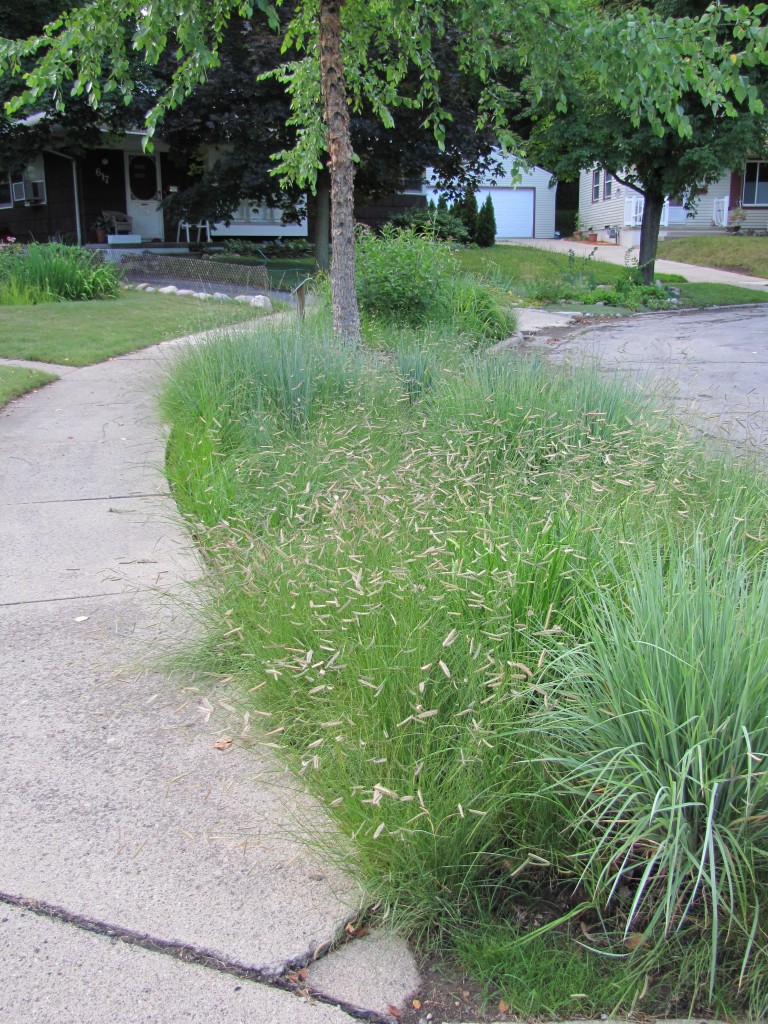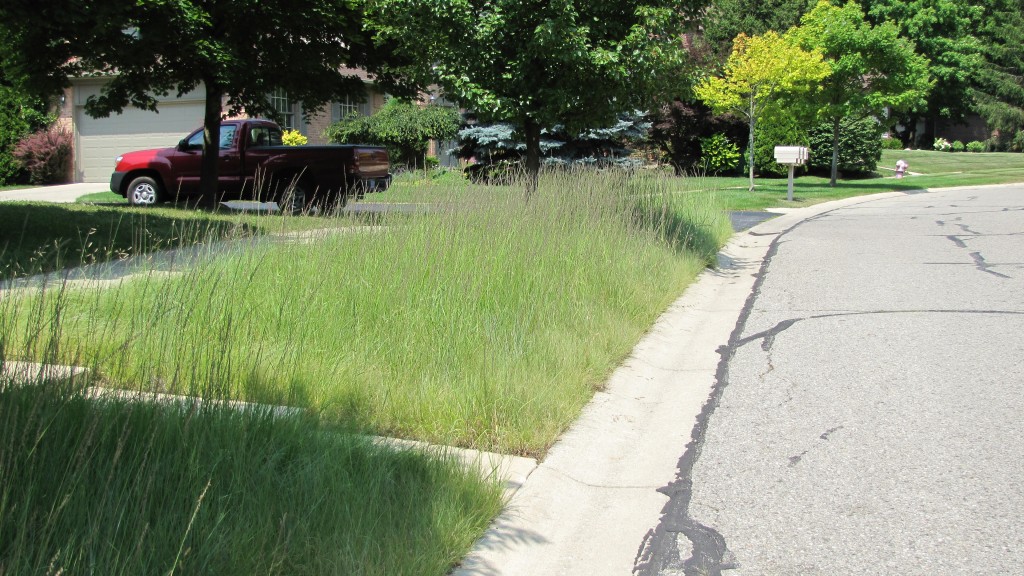Lawn covers over 65,000 square miles of land in the United States and, as such, is the largest cultivated crop, exceeding that of corn or soybeans. Lawns consume 30,000 tons of pesticides every year and many are possible or probable carcinogens. 800 million gallons of gasoline propel our lawn mowers spewing CO2 into the atmosphere. And 30% of our municipal water supplies are wasted yearly to quench our lawn’s thirst.
There are a few native grasses and sedges that can be used as lawn alternatives. While none of them can stand up to the traffic of a gaggle of kids playing soccer on them everyday (but what can?), they provide alternatives that provide habitat and don’t need to be mowed, fertilized, or watered. There are alternatives for sun or shade.
BUFFALO GRASS
Buffalo Grass is a native turfgrass substitute that grows only five inches tall. Native to the high plains west of Chicago, its roots can reach 8 feet down (compared to 4 inches for typical turfgrass) and thus requires little water, no fertilizer, and is more weed resistant. Why do you not know about Buffalo Grass? Because Scotts and #BigHorticulture do not want you to and want you to have a chemically addicted lawn instead.
OTHER OPTIONS
Pen Sedge (Carex pensylvanica) is a 6 inch tall woodland sedge that spreads via rhizomes and will fill in to produce a lawn-like look.

Where playspace is not required, taller short prairie grasses can be used.





